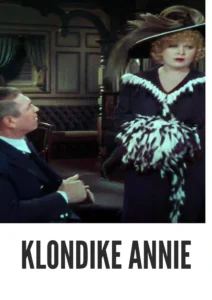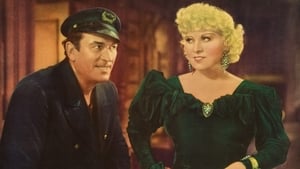Video Sources 0 Views

Synopsis
Seduction, and Gold: Klondike Annie (1936) in Vibrant Color

Step into the daring world of the Yukon with Klondike Annie, a captivating comedy from 1936, now beautifully colorized for a viewing experience like never before. Starring the iconic Mae West, this film delivers a blend of humor, and adventure. Perfect for fans of Mae West and those seeking a taste of classic cinema, this HD download brings a piece of cinematic history to your screen. Klondike Annie is also known as Queen of the Yukon.
Klondike Annie Storyline: A Woman on the Run
Klondike Annie tells the story of Annie Alden (Mae West), a singer who finds herself in trouble after an altercation with a man in Shanghai. To escape prosecution, she accidentally kills him with a bottle.Fleeing to the Yukon, Annie assumes the identity of Sister Annie, a missionary, to avoid the authorities. Along the way, she encounters various characters, including Bull Brackett (Victor McLaglen), the owner of a gambling hall who falls for her charms, and Inspector Jack Forrest (Phillip Reed), a Mountie who suspects her true identity. Annie’s wit and charm help her navigate the challenges of the rugged landscape, until her past catches up with her.
Movie Cast
The film features a talented cast of actors who bring this story to life:
- Mae West as Annie Alden (Klondike Annie)
- Victor McLaglen as Bull Brackett
- Phillip Reed as Inspector Jack Forrest
- Helen Jerome Eddy as Sister Annie
- Harold Huber as Nick
Movie Genre
Klondike Annie falls into the genre of comedy, with elements of romance and adventure. Its witty dialogue, memorable characters, and exotic setting make it an engaging film.
Historical Context: Mae West and Censorship
Released in 1936, Klondike Annie represents a significant moment in Mae West’s career, showcasing her unique persona. The film faced scrutiny from censors due to its suggestive content, reflecting the challenges faced by filmmakers during the era of the Hays Code. Despite the censorship, Klondike Annie remains a testament to West’s enduring appeal and her ability to push boundaries within the constraints of the time.
Colorization Details
This colorized version of Klondike Annie has been meticulously restored using modern digital techniques, enhancing the visual appeal while preserving the film’s original atmosphere. The colorization process involved carefully analyzing the grayscale tones of the original black and white footage and assigning appropriate colors to each scene. While the specific software used remains proprietary, the techniques employed included advanced algorithms for color palette selection and image enhancement. This painstaking process brings new life to the characters and settings, making the story even more engaging for modern audiences. While some may debate the merits of colorizing classic films, it introduces these films to a broader audience, ensuring their legacy for future generations.
Technical Details
- Director: Raoul Walsh
- Screenplay: Mae West
- Based on: her play “Frisco Kate”
- Cinematography: Karl Struss
- Edited by: James Smith
- Production Company: Paramount Pictures
- Distributed by: Paramount Pictures
- Runtime: 80 minutes
Technical Specifications
- Download Format: MP4
- Resolution: HD (1080p)
- Compatibility: Compatible with most devices, including smartphones, tablets, computers, and smart TVs.
Reviews and Critical Reception
Klondike Annie is a notable film in Mae West’s career, showcasing her wit and charisma. While it faced censorship challenges, it remains a significant work in the history of cinema and a testament to West’s enduring appeal. As a film that pushed boundaries, Klondike Annie provides a unique perspective on the era in which it was made.
FAQs
- Q: What is Klondike Annie about?
- A: Klondike Annie is a comedy about a singer who flees to the Yukon and assumes the identity of a missionary to evade the authorities.
- Q: Is Klondike Annie (1936) a well-known Mae West film?
- A: Klondike Annie is one of Mae West’s notable films, showcasing her wit and charisma.
- Q: Is this version of Klondike Annie colorized?
- A: Yes, this version has been professionally colorized to enhance the viewing experience.
- Q: What makes Klondike Annie interesting for Mae West fans?
- A: Klondike Annie offers a unique perspective on Mae West’s career, showcasing her ability to push boundaries within the constraints of censorship.
- Q: What is the download format?
- A: The download format is MP4, which is compatible with most devices.
- Q: What resolution is the download?
- A: The resolution is HD (1080p), providing a high-quality viewing experience.
Download Now in HD!
Watch Klondike Annie Today!











